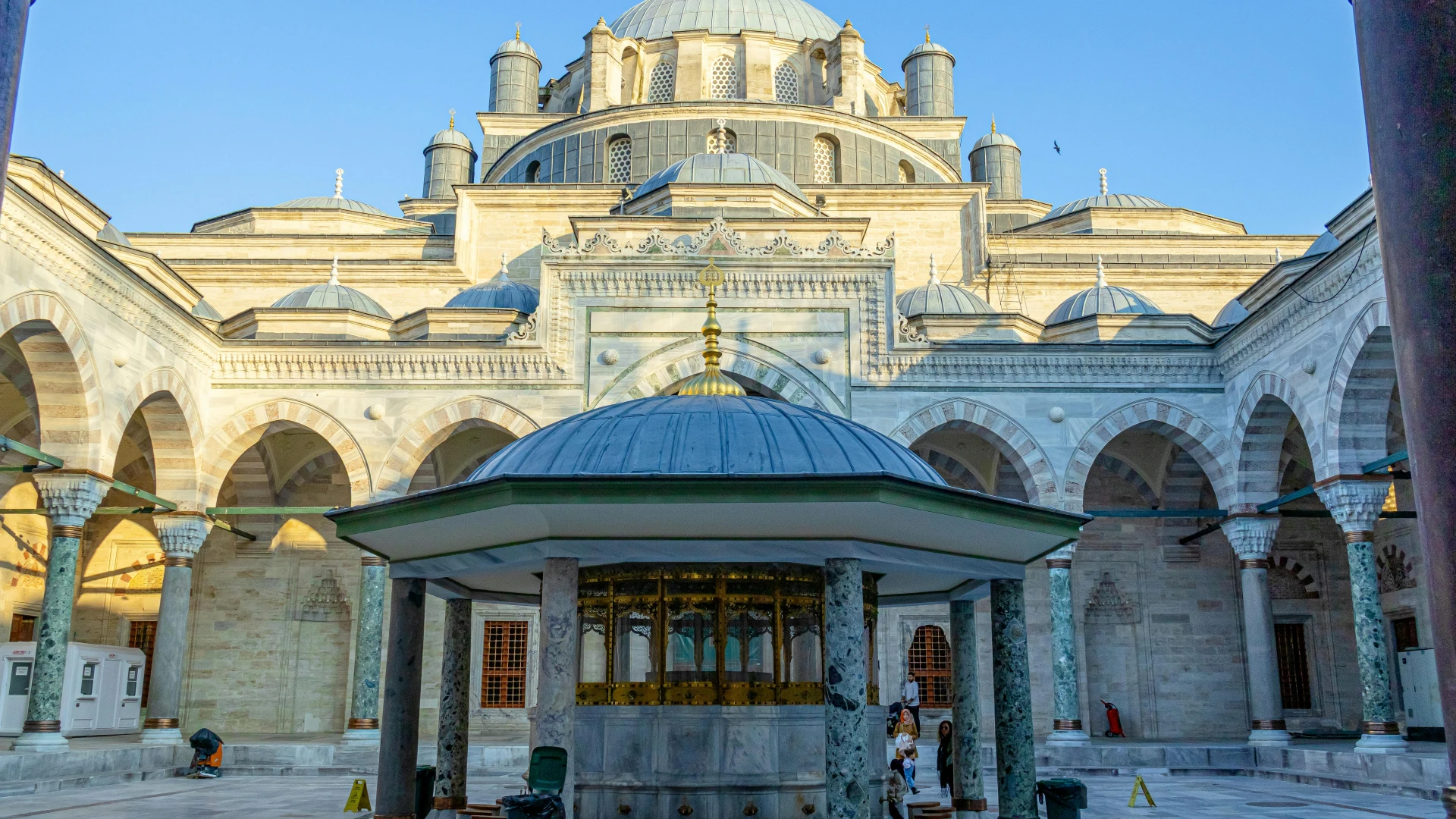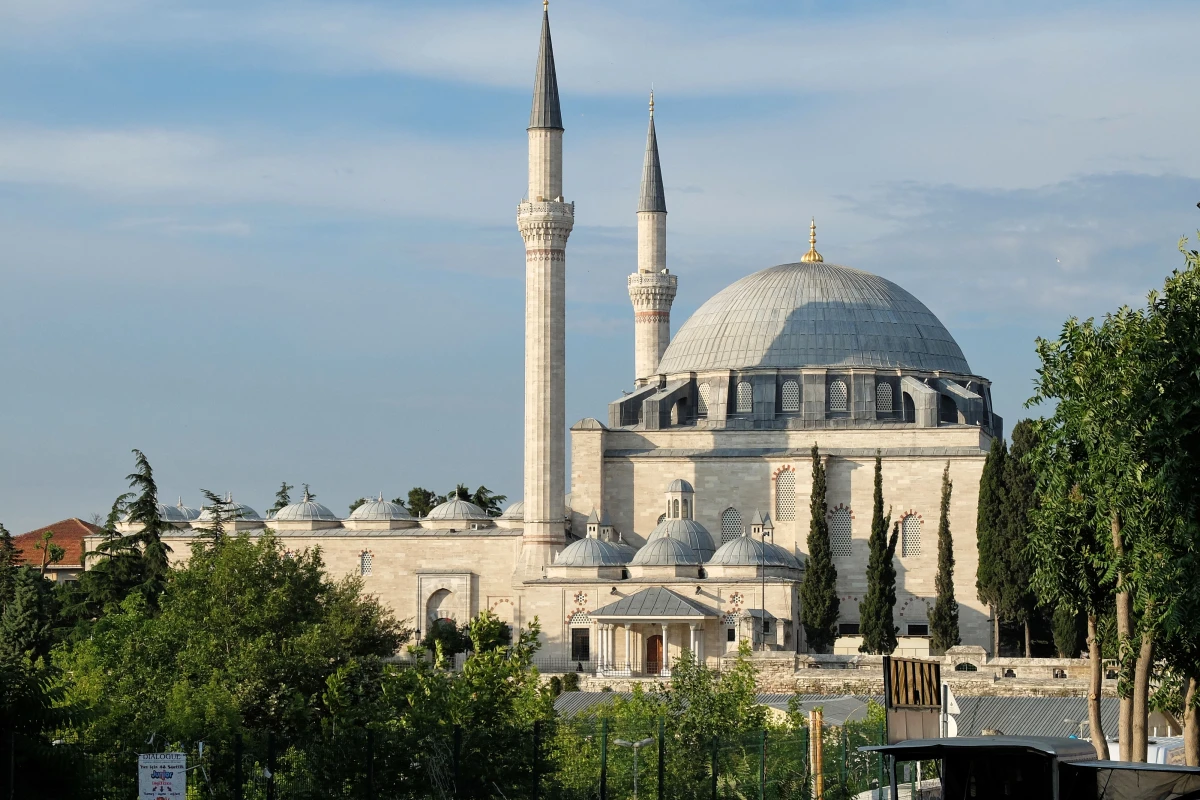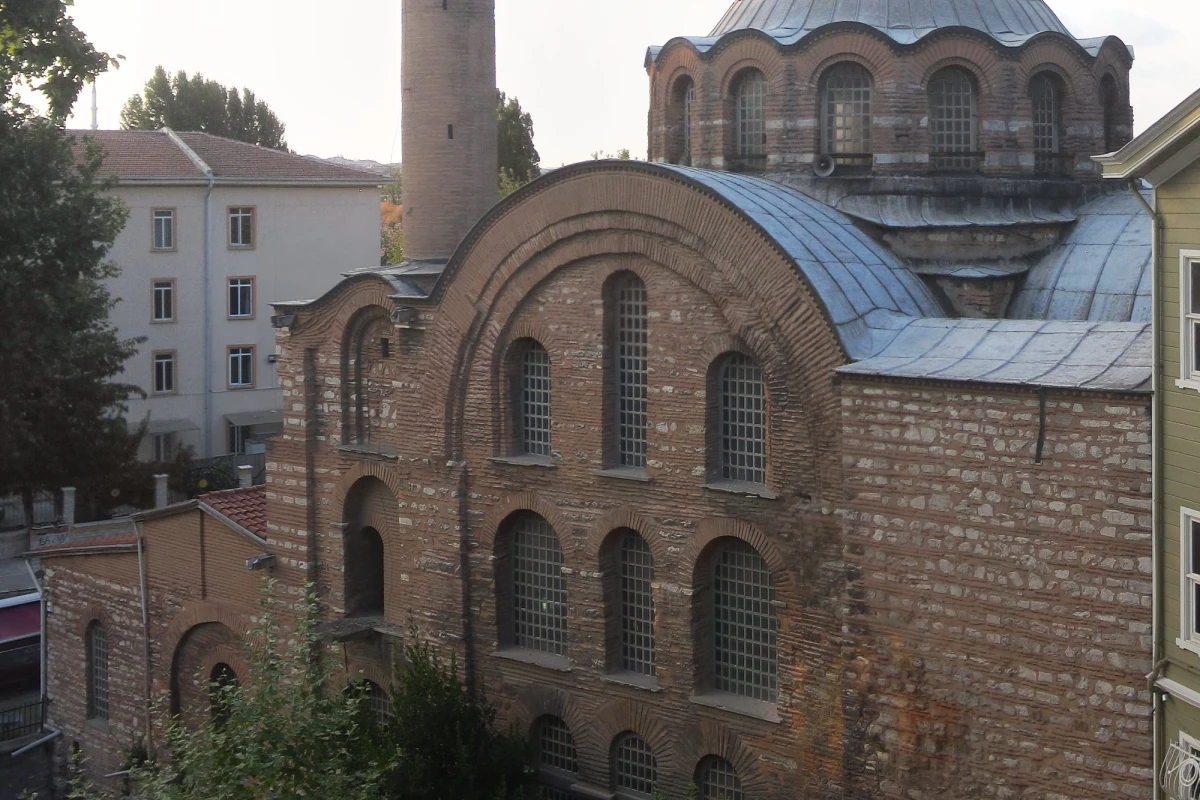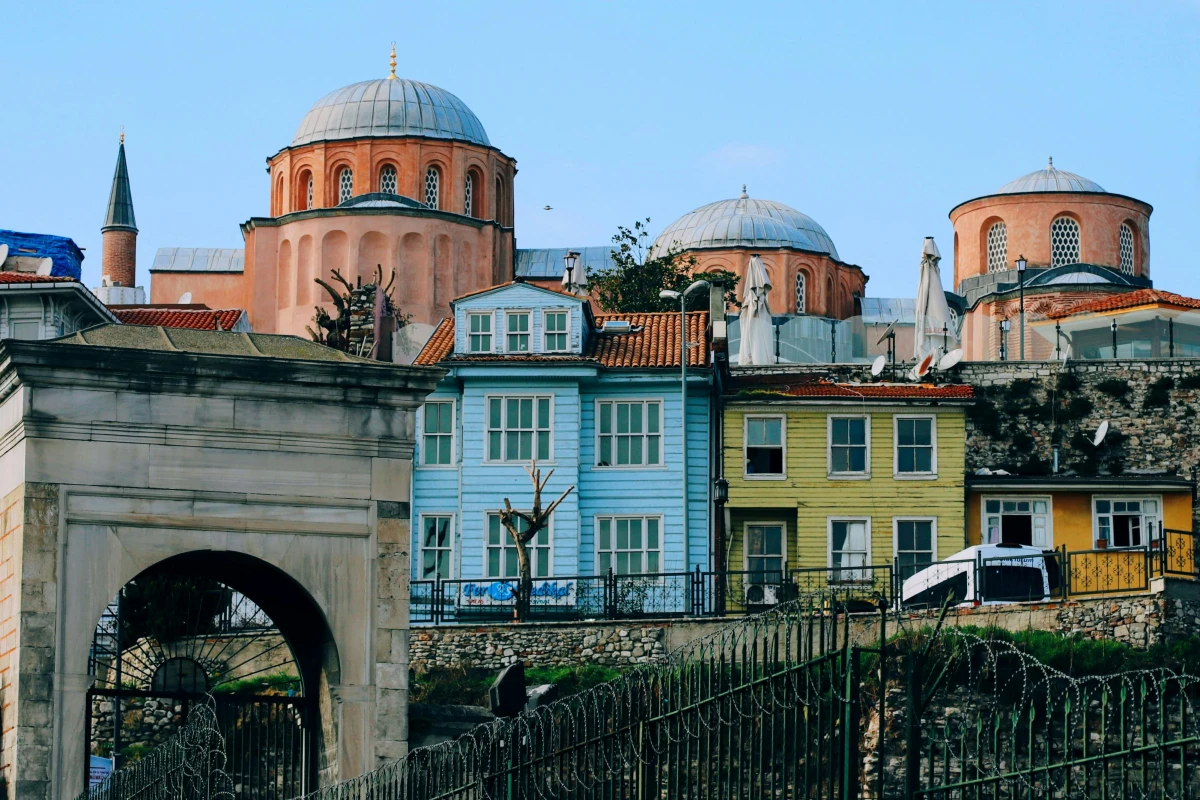Bayezid II Mosque: Istanbul’s Quiet Marvel Near the Grand Bazaar
Right in the lively Beyazıt Square, just a few minutes' walk from the Grand Bazaar, stands one of Istanbul’s oldest and most captivating imperial mosques: the Bayezid II Mosque. Built over 500 years ago, this mosque is a peaceful retreat from the city’s chaos — a place where history, spirituality, and architecture come together in perfect harmony.
A Landmark of Ottoman Confidence
Commissioned by Sultan Bayezid II, son of the legendary Mehmed the Conqueror, the mosque was constructed between 1501 and 1506. This was a time when the Ottomans were asserting their power not only through politics but also through architecture. The Bayezid II Mosque was the second imperial mosque built in Istanbul after the conquest, and it signaled a shift toward a more refined Ottoman architectural style.
What makes it unique is its position in architectural history: it connects the early, experimental mosques of the 15th century with the classical masterpieces of the 16th, like the Süleymaniye Mosque.
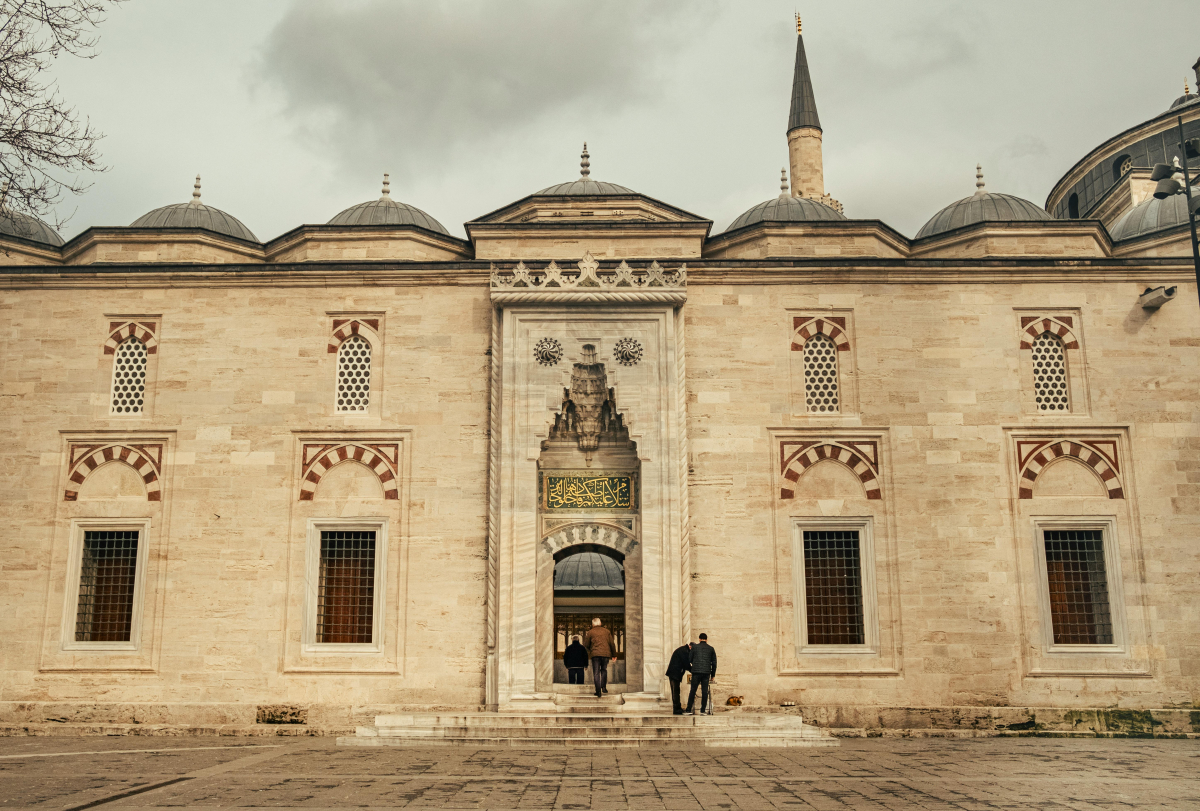
Bayezid Mosque Entrance Portal
A Courtyard That Invites Stillness
As you approach the mosque, the wide marble courtyard immediately sets a tone of calm. It's framed by elegant arcades and supported by Byzantine-era columns reused from older churches — a classic Ottoman practice of blending the old with the new.
At the center, you’ll find a şadırvan (ablution fountain), added later during the reign of Sultan Murad IV. It’s still used by worshippers today and gives the entire courtyard a sense of ritual and rhythm.
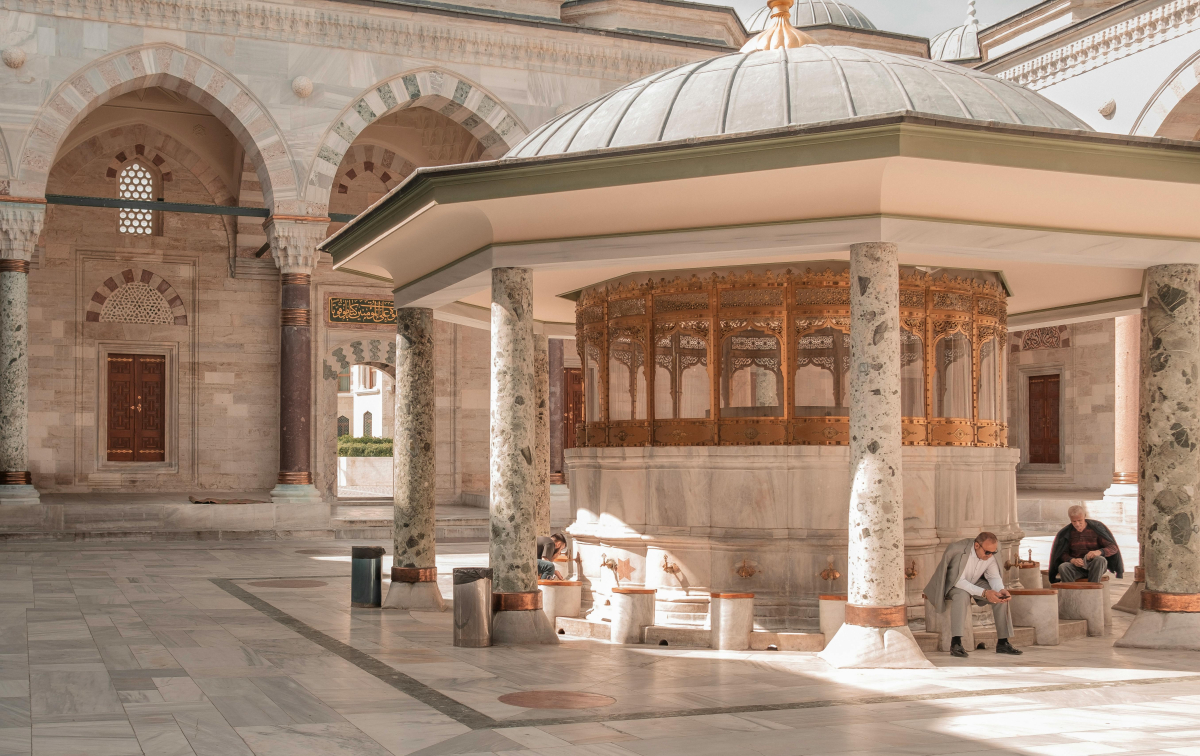
Ablution area of Bayezid Mosque
Here’s a local tip: come in the early morning or around sunset. You’ll hear birds chirping in the trees and see students from the nearby university crossing the square — a quiet slice of Istanbul life you won’t find in guidebooks.
Inside the Prayer Hall: Light and Symmetry
Step into the prayer hall, and you’ll be struck by its proportions. The central dome, flanked by semi-domes and buttresses, creates a sense of gentle upward motion. Sunlight filters through rows of windows, illuminating delicate İznik tile work and graceful Arabic calligraphy.
Unlike the later grand mosques that overwhelm with size, Bayezid II Mosque impresses with balance. The architectural elements don’t compete — they collaborate.
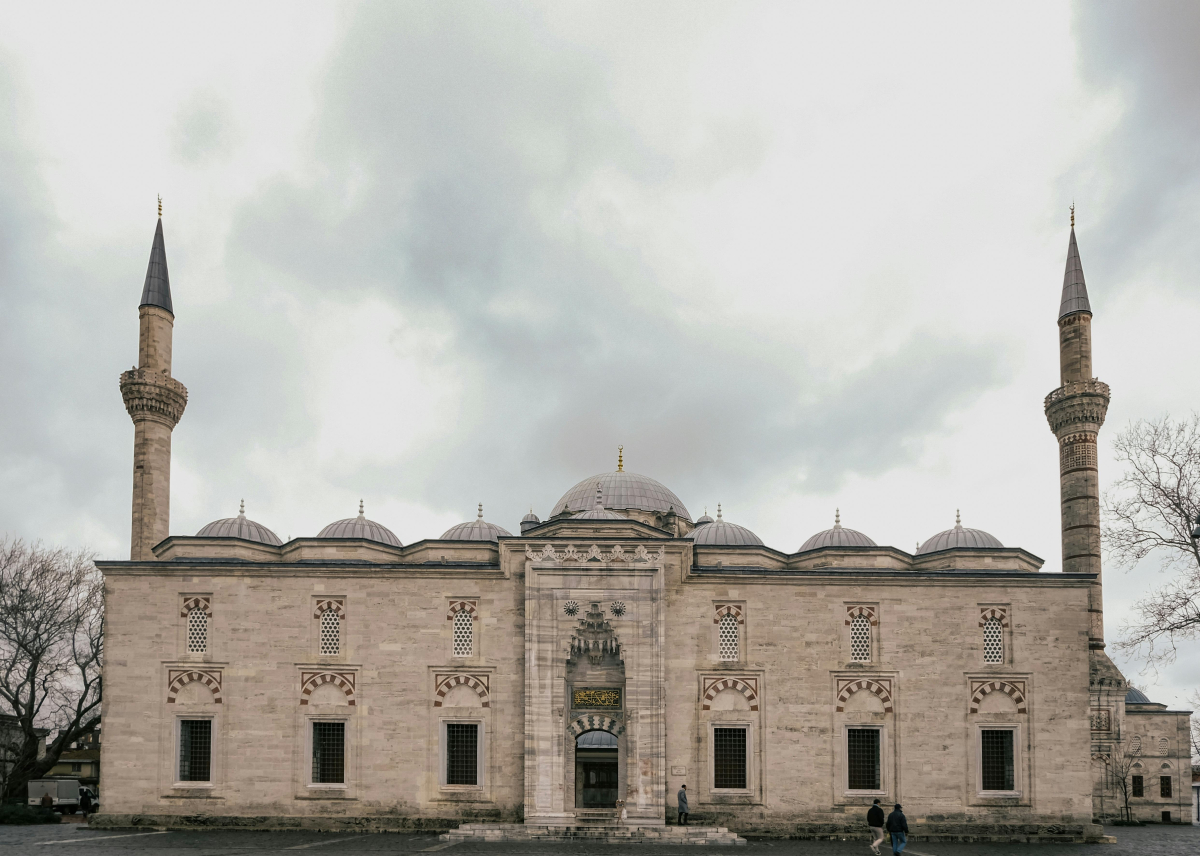
Bayezid Mosque Symmetric Exterior
To the right, look for the Sultan’s Loge (Hünkâr Mahfili), a raised platform reserved for the sultan. It's supported by ten repurposed marble columns and gives you a glimpse into the exclusive world of imperial worship.
Beyond the Mosque: The Külliye Complex
One thing that sets Ottoman mosques apart is that they weren’t just places for prayer — they were the hearts of communities. The Bayezid II Mosque was part of a larger külliye, a complex that included:
- A madrasa (religious school)
- A soup kitchen for the poor
- A caravanserai for travelers
- A library
- And a hamam (Turkish bath)
Today, many of these buildings still stand. The Beyazıt State Library, once the soup kitchen, is a treasure trove for lovers of history and architecture. Don’t miss it — the interior was beautifully restored in recent years and includes rare manuscripts on display.
The Tomb of a Sultan
Behind the mosque lies a quiet cemetery shaded by trees. Here you’ll find the tomb of Sultan Bayezid II, a modest yet elegant structure that reflects his calm personality. Unlike the extravagant mausoleums of some later sultans, Bayezid’s tomb feels intimate.
Nearby, you’ll also see the tomb of Mustafa Reşid Pasha, the architect of the Tanzimat reforms in the 19th century. It’s an unexpected bonus for history buffs.
Local Tips for Visiting
🕌 Visiting Hours: Open daily from early morning until late evening. Closed to tourists during prayer times (five times a day).
👕 Dress Code: Modest clothing is a must. Women should bring a scarf to cover their hair.
🥿 Shoes Off: Like in all mosques, remove your shoes before entering the prayer hall. Plastic bags are usually provided.
📷 Photography: Allowed, but be discreet — especially during prayers. Flash is discouraged.
📍 Getting There: Easily accessible by tram (Beyazıt-Kapalıçarşı stop on T1 line).
Bonus tip: After your visit, head to the Süleymaniye neighborhood uphill for stunning views of the Golden Horn and a cup of tea at a local terrace café.
A Forgotten Jewel Worth Rediscovering
The Bayezid II Mosque may not be as famous as the Blue Mosque or Hagia Sophia, but for those who take the time to visit, it offers something rare: authentic silence, historic richness, and a sense of human scale in a city of grand statements.
It’s a mosque that doesn’t scream for attention — and that’s exactly what makes it so special.
If you’re seeking a real connection with Istanbul’s Ottoman soul, far from crowds and tourist traps, let Bayezid II Mosque surprise you. It’s not just a stop — it’s an experience.


